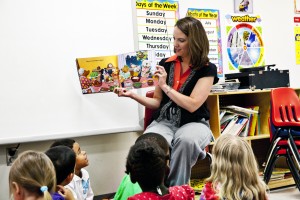The Special Education Dilemma in School Safety
The Learning Connection is on online community through the Indiana Department of Education. Recently a question was posted that gives much food for thought for students in special education. “Has any school dealt with students who are unable to participate in fire drills? If so, what procedures have you put in place to accommodate the children while satisfying the requirement to engage all students in the drill?” Schools with special education students often struggle with including such students in their safety plans. When do the needs of the students outweigh the safety needs of the school? Or do they?
Practice Realistically
There is an old sports saying, “Practice as you will play.” This basic truth is relevant to school safety. Everyone should practice safety drills as they would actually happen. It helps reduce errors, and will better assist in identifying gaps in planning.
This is especially true for students with special needs. I have seen some schools warn, some of their special education classes, about drills ahead of time. They feel it’s necessary to reduce the stress some of these students feel with the loud noises and world changing activity that occur with drills. While the concern is understandable, does it help them in an actual emergency? Emergencies occur without notice. Precious seconds can be lost attempting to assist students who react negatively to a sudden change in their routine. Not exposing these students to such situations until a real event, can put them and others at risk.
Individualized Education Plans and School Safety
Under the Individuals with Disabilities Education Act (IDEA), special education students are required to have individualized plans. Different districts call them by different names, but the result should be the same. Identifying each child’s needs and a written plan specifying how their requirements are met, including emergency and safety issues. For children in special education programs, this requires additional scrutiny and thoughtfulness.
Will a special education student need more than one staff member to assist them? If so, who will it be? Will the student require special equipment, such as an evacuation chair to get a student down stairs? Will they need noise-reducing headgear to reduce audio stimulation? These and other similar questions may not be something considered for most students but for those with special needs they can be critical factors.
Just as a building’s age and characteristics would be considered in a facility’s safety plan, so should the uniqueness of special education students when identifying their safety requirements. In special education, individual needs are identified by a case conference committee, which includes the parents. This committee should then create a safety plan that includes the student’s involvement in safety drills.
As with all safety plans the input of local first responders should be sought whenever changes are made. This helps to ensure compliance with local, state and federal regulations. Never forget, the goal is to keep ‘everyone’ safe!
